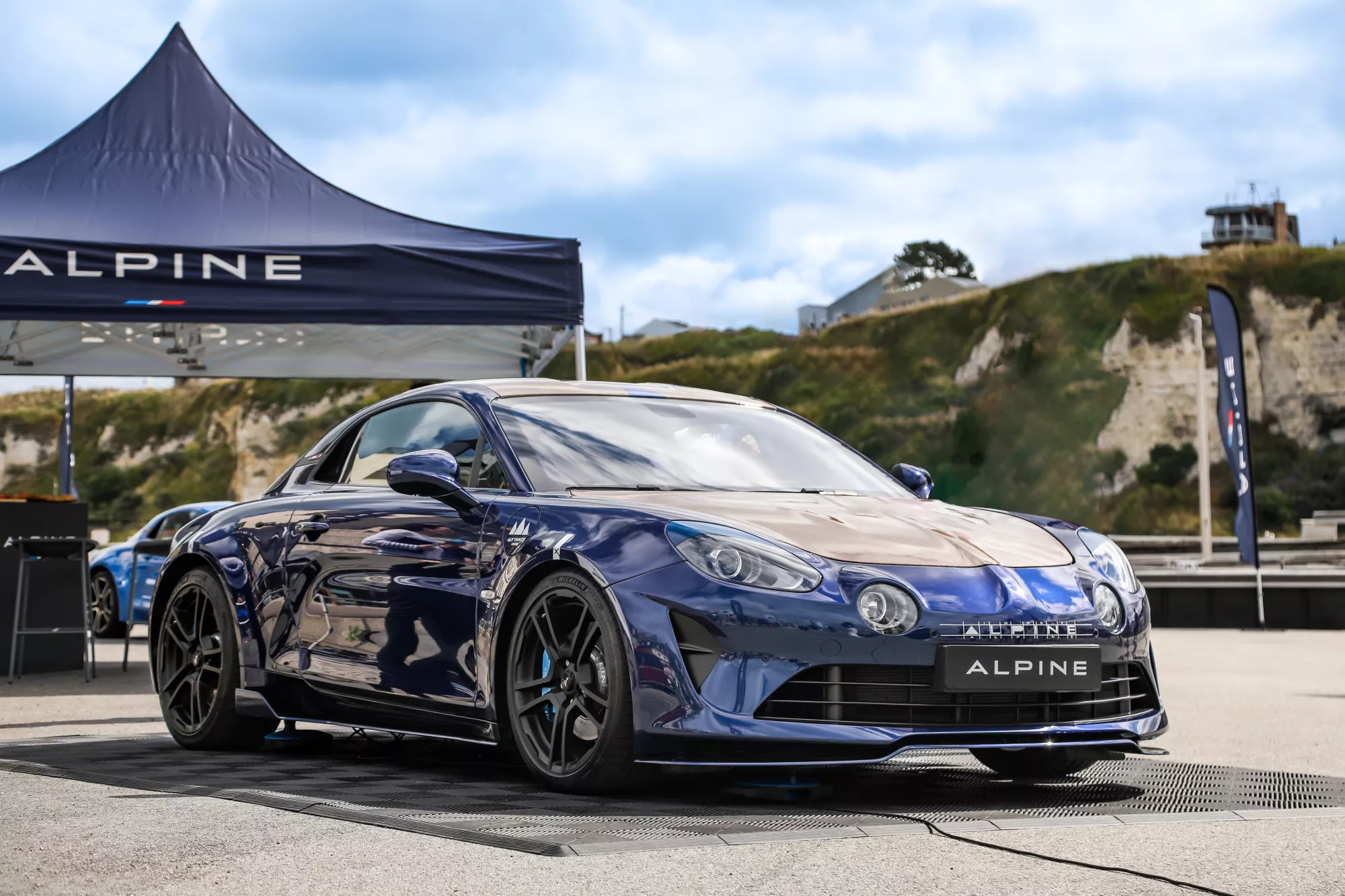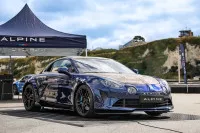Alpine: driving innovation, with linen
True to its quintessence, Alpine continues to blaze new trails. To rise to the decarbonisation challenge, the carmaker is for instance pioneering the use of linen as a symbol of eco-responsibility. For example, this material is used instead of carbon fiber in certain parts for its Alpine A110 E-ternité prototype. With this switch, Alpine has opted for a natural, lightweight material that it can source locally, in Normandy, near its birthplace in Dieppe. This breakthrough is the brainchild of two passionate researchers: Florent, Exterior Accessory Design Leader, and David, Head of Upstream Workflows, at the ALP’INNOV CENTER, Alpine’s lab in Les Ulis. Here’s more about this success story that will go a long way.
27 July 2023
For Alpine, performance is as much about the track as it is about its innovation laboratory. It is pushing ahead on lowering carbon emissions to protect the environment, while making its cars lighter, and banking on linen to stay at the cutting edge. Alpine A110 E-ternité, the all-electric prototype it unveiled in July 2022 is the perfect example.
_1690199584.png) It was a real technological challenge to transition from a conventional ICE A110 to the all-electric A110 E-ternité. Taking a more enviro-conscious approach, using linen in a vehicle, is a real opportunity. It is lighter and, with it, the car has fewer parts. It is a technological breakthrough as much as an ecological step up.
It was a real technological challenge to transition from a conventional ICE A110 to the all-electric A110 E-ternité. Taking a more enviro-conscious approach, using linen in a vehicle, is a real opportunity. It is lighter and, with it, the car has fewer parts. It is a technological breakthrough as much as an ecological step up.Florent, Exterior Accessory Design Leader at Alpine

Linen hood for the A110 E-ternité 100% electric / © HORYZON
Flax opens new doors
This prototype A110 E-ternité is a lab on wheels to test the innovations that will shape Alpine’s Dream Garage. The model is as agile as any other that has elevated Alpine into a legend, and lighter than any other electric model in its segment. Its weight of 1,378 kg includes 392 kg of batteries for a surplus limited to 258 kg compared to a ICE A110. The linings on A110 E-ternité’s bonnet, roof, rear window, seat shells and future rear skirt are linen. The two people behind these low-carbon body parts are two passionate researchers: Florent and David. They fine-tuned all these parts to pave the way into the future with new technologies. Linen was the obvious choice for them: it is natural, bio-sourced, and its production process is less energy-intensive than the one for carbon, the go-to option to reduce a sports car’s weight. Its low density (hence light weight), resistance and acoustic properties are added features. What’s more, the linen used in these parts comes from Terre de Lin, a cooperative that supplies 15% of the world’s linen and is near Dieppe, the Alpine brand’s birthplace and home to its Manufacture Alpine Dieppe Jean Rédélé.
_1690205899.jpg)
The roof and rear window are made of linen / © HORYZON
Linen’s journey from the seed to the flax to the bonnet
To grow, flax needs seeds, soil, water and sunshine. So it is eco-friendly. But, before the woven linen reaches Alpine’s lab, its partner Terre de Lin processes it in a number of ways. The seeds are sown in March and April and the flax plants are pulled from the ground at the beginning of the summer. They are arranged in windrows in the fields for retting, a natural process that releases the flax fibres from the wooden stalks. This process last from 15 July to 15 September. The flax is then gathered into 250 kg bales tied together with linen rope. Then comes scutching, to extract the long fibres, and the shives are then crushed. Then the flax is combed to equalise it, and stretched into yarn, which is rolled into 45 kg bales and sent to the spinning mill where they are woven into a fabric then sent on to Alpine. But how does the flax warp and weft become a linen lining for the bonnet, seat shell or roof? The Alpine lab at Les Ulis, southwest of Paris, receives the dried fabric. The Alpine Design department decided to use a biaxial (45-degree) pattern combined with cotton thread. The resulting fabric is 95% linen and 5% cotton. It is then steeped in epoxy resin and ends up as 80% linen and 20% resin. The woven fabric is placed in a mould, the part’s direction and number of folds are carefully checked, and the outer (visible) surface is placed in contact with the mould. The part is covered and vacuum-treated. The prototype part is then removed from the mould, cut by hand and assembled at the ALP’INNOV CENTER.
_1690205744.jpg)
The flax plants are pulled from the ground, arranged in windrows in the fields for retting (combining the action of humidity and drying); then gathered into bales / © HORYZON
Research centred on performance
A lot like Roland Jourdain’s catamaran, which is called We Explore, came second in the 2022 Route du Rhum and has a linen hull, the innovative cars that Alpine builds are designed for performance. Incidentally, Terre de Lin supplies the raw material to both. “Over time, we also want to switch the epoxy resin, to completely decarbonise the part,” Florent continues. He and David are looking for bio-sourced resins that meet their specifications. This relentless quest to improve linen components is an example of how serious Alpine is about pushing performance. An Alpine A110 R carbon bonnet weighs 3.98 kg and a typical A110 aluminium bonnet 6.9 kg. A part made of linen, however, weighs 20% more than a carbon one today. With their knowledge of composites, they can however integrate a large number of functions, hence gain mass and reduce the number of parts. Florent says that all the options are on the table. Designing linen moulds is one they are looking at seriously. “Moving forwards, we can think about indistinctly producing carbon, glass or linen parts using the same mould.” It is still too soon to talk about a linen Alpine production car – but the first trends are looking promising.
_1690205719.jpg) After scutching, the flax is combed and arranged into strips / © HORYZON
After scutching, the flax is combed and arranged into strips / © HORYZON
Media library (6)
related topics








